I was of two minds when I first heard that Marvel would be releasing an original graphic novel, Amazing Spider-Man: Family Business, starring Peter Parker as Spider-Man and his “long-lost sister” Teresa. There was the all-star cast of creators assigned to the project, including two of my favorite writers in Mark Waid and James Robinson, and the wonderful, Alex Ross-inspired artist Gabriele Dell’otto, but the plot sounded so clichéd and predictable – long-lost family member angles always tend to play out a certain way in the world of comic books, and it’s generally never pleasant for the hero. Plus, after the past couple of years of breakneck, “everything counts” storytelling courtesy of Dan Slott, I didn’t know how a story that was so clearly separated from the current comics continuity-wise would read at this exact moment in time.
But as the old adage goes, the cream always rises to the top. Despite Family Business being so self-contained and tonally different from the Big Time/Superior Slott-era, the talent of Waid, Robinson, Dell’otto and penciller Werther Dell’Edera shines through and the end result is a really enjoyable story that I’m hopeful can somehow be worked into the “mainstream” continuity of Spider-Man comics.
Part of what makes Family Business such a successful endeavor is the way the creators think outside the box in terms of a “normal” Spider-Man story while still staying true to the core characteristics of the featured players. The graphic novel mixes classic Spider-Man action with the mystery, intrigue and relentlessness of the Jason Bourne film franchise (in one scene, Spidey even jokes that he feels like he’s living in a Bourne movie). Setting the story in international locales like Tunisia, Cairo and Monte Carlo rather than New York City, was a calculated risk by the creators, but they find a way to make it work because the foreign setting plays hand-in-hand with the larger themes of Spider-Man being so emotionally sideswiped by the new information he has learned about his past. Plus it doesn’t hurt to have an artist like Dell’otto provide his gorgeous painted art depicting some of the most visually stunning locales in the world.
The story’s biggest potential pratfall for me was how Peter’s sister Teresa was going to be written (and what the eventual “twist” with the character was going to be). Peter first meets Teresa after he’s been mysteriously abducted (for reasons we learn later) from his apartment. When she introduces herself as his sister, Peter immediately runs the list of names of some of his enemies who could be messing with him. Plus, why would Peter’s parents send him off to live with Aunt May and Uncle Ben and essentially abandon a second child without telling anyone? Something definitely didn’t add up with this subplot, and like Peter, headed into this story I was a bit anxious to buy into this script’s premise if the rug was just going to be pulled out from underneath me.
As it worked out, Teresa ended up being the most interesting part of this graphic novel. Her back story about how she wasn’t even aware of who her parents and family were until very recently was very convincing, especially when you consider the secretive, espionage background of the Parker family. Plus, there’s some outstanding chemistry between she and Peter. Waid and Robinson manage to capture a very nuanced relationship where both of these people have just met and thereby don’t fully trust each other, and yet there’s an inherent familial feel to how they interact. The Monte Carlo casino scene where they battle Cyclone (good gracious, of all villains to randomly show up in an original graphic novel!!!) is just pure unadulterated fun, and a lot of that is due to the Peter/Teresa dynamic.
Waid and Robinson’s pitch-perfect characterization of Peter and Teresa allows me to fully buy in to the story’s concept. I’m willing to accept Teresa as Peter’s sister because I want her to be Peter’s sister. She’s not just some random plot device. So when the twist does eventually come and we learn that she’s not who she says she is – or better put, she’s not who she thinks she is – the moment still manages to emotionally resonate even though I was expecting a variation of this reveal to come at some point before the end of this graphic novel. Then there’s the story’s epilogue, which plays with our emotions just a little bit more by teasing that maybe there is another Parker out there after all. I, for one, hope it is somehow Teresa, because I liked the character that much (though I doubt that’s the case given how improbable that storyline would be).
Family Business also manages to get me to care about Peter’s parents for the first time in ages. Because of the long-lost sister angle, it was all but inevitable that readers were going to be treated to some Parker family history. Despite the current The Amazing Spider-Man film franchise’s infatuation with Peter’s parents, I’ve always found their origin story to be completely unnecessary. I know I’m not alone in thinking one of Stan Lee’s biggest blunders in fleshing out Peter as a character was making his parents S.H.I.E.L.D. agents who died in the line of duty. The fact that Peter was an orphan being raised by his aunt and uncle made his rise to being a costumed superhero like Spider-Man all the more improbable and wonderful. It speaks to the absolute unpredictability of life – how a socially awkward teenager witnessing a science experiment could be bitten by a radioactive spider and become the Amazing Spider-Man. The fact that this teenager happened to have borderline superheroes for parents cheapens them miraculous randomness of Spider-Man’s birth (though obviously not enough to turn me off to the character and his comics).
But Family Business makes the Richard and Mary Parker feel more essential. Within this story, Peter tells Teresa that he has let go of any resentment he might have for his parents for abandoning him, but by giving us more mysteries to uncover about these characters, the idea of Peter digging into his past no longer feels quite so counter-productive and superfluous.
The Parkers and their mysterious, trailblazing backgrounds also provide the impetus for the graphic novel’s big bad, Kingpin, to make his move on Peter (and not Spider-Man, though Kingpin learns they are one and the same by the end of the story, which could make things quite tricky for Peter in the comics if Family Business is considered canon). Kingpin is used well in this story, as he’s as evil and manipulative as he’s always been, but in a way that just demonstrates his old school desires to build on his criminal empire. Kingpin’s issue with Peter is nothing personal. He needs to lure out a member of the Parker family because he needs their DNA to open up a vault of buried treasure and other comic book macguffins. Money and power are two of the simplest but most effective motivators for a villain out there, and Kingpin is definitely one of those characters who reads best when that’s his focus.
It’s hard to say what the long-term impact of Family Business will ultimately be, but as long as Marvel continues to bring top-notch talent to these initiatives, I will remain a fan of this original graphic novel format that features standalone, evergreen stories. Plus, Family Business demonstrates that there are still plenty of worthwhile Spider-Man stories to tell, without the need of shocking industry gimmicks. That might sound like a weird thing to say about a story that is built on a long-lost sister angle, and the use of foreign locations, but Family Business at its core, is driven by its strong characterization, beautiful art, and well-paced storytelling.
All images from Amazing Spider-Man: Family Business: Mark Waid, James Robinson, Gabriele Dell’otto & Werther Dell’Edera

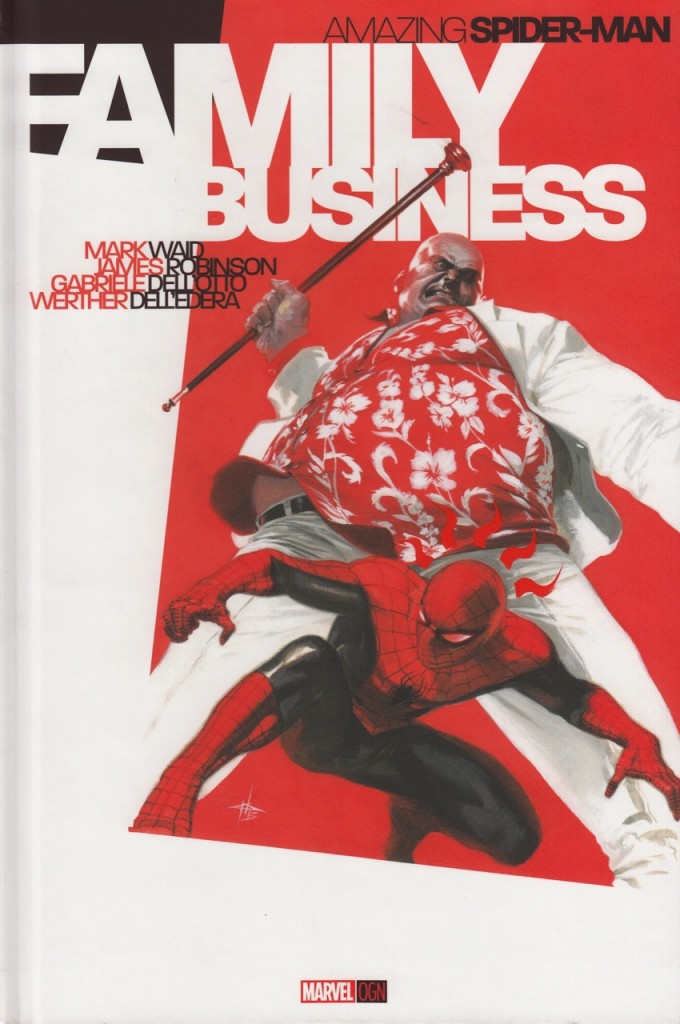
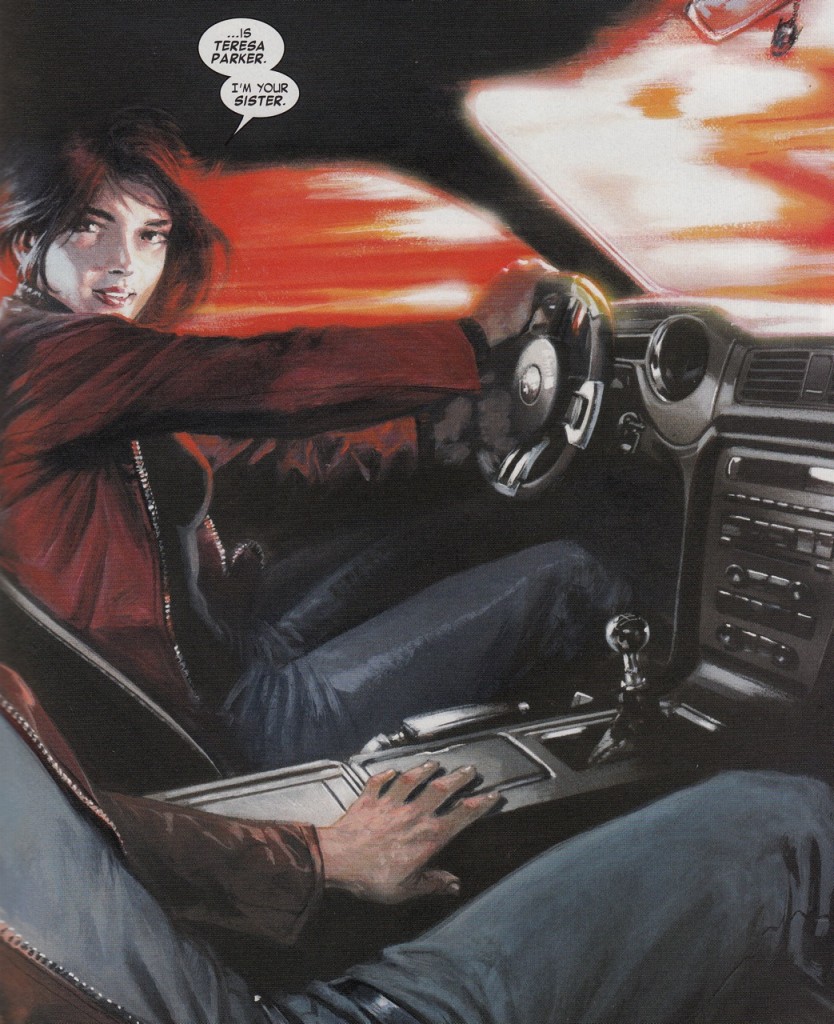
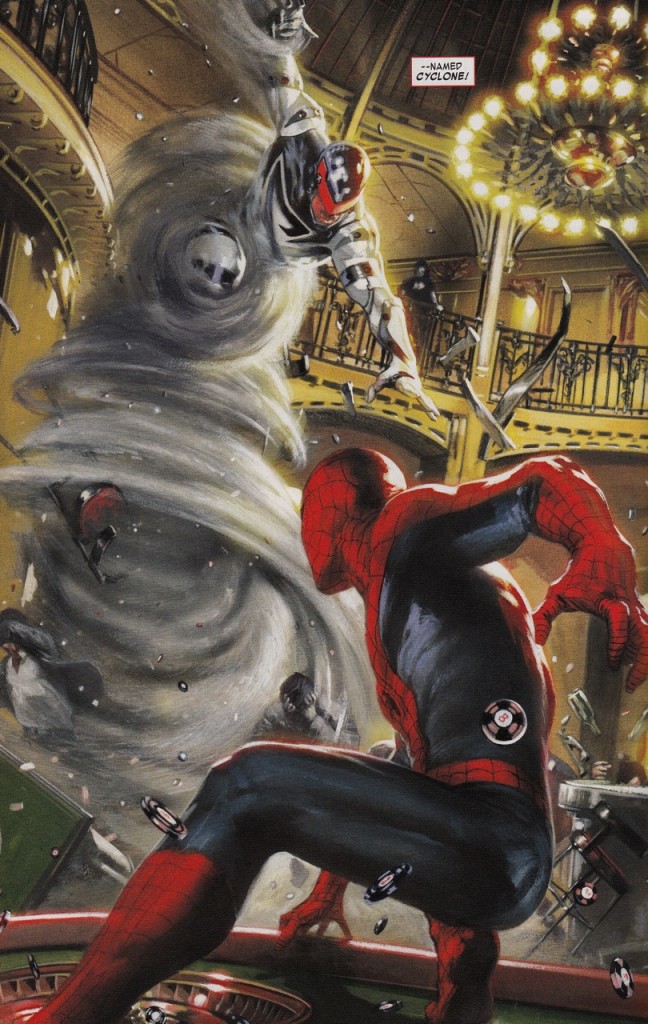
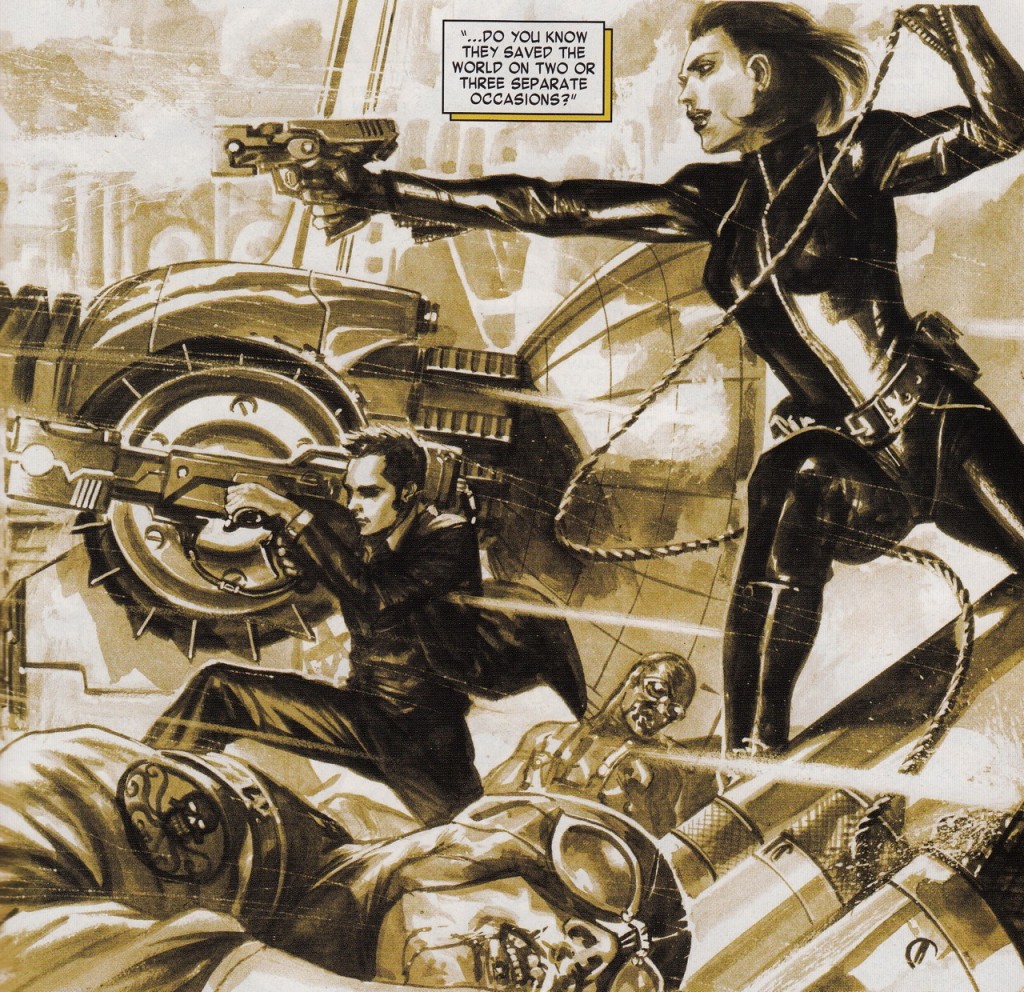
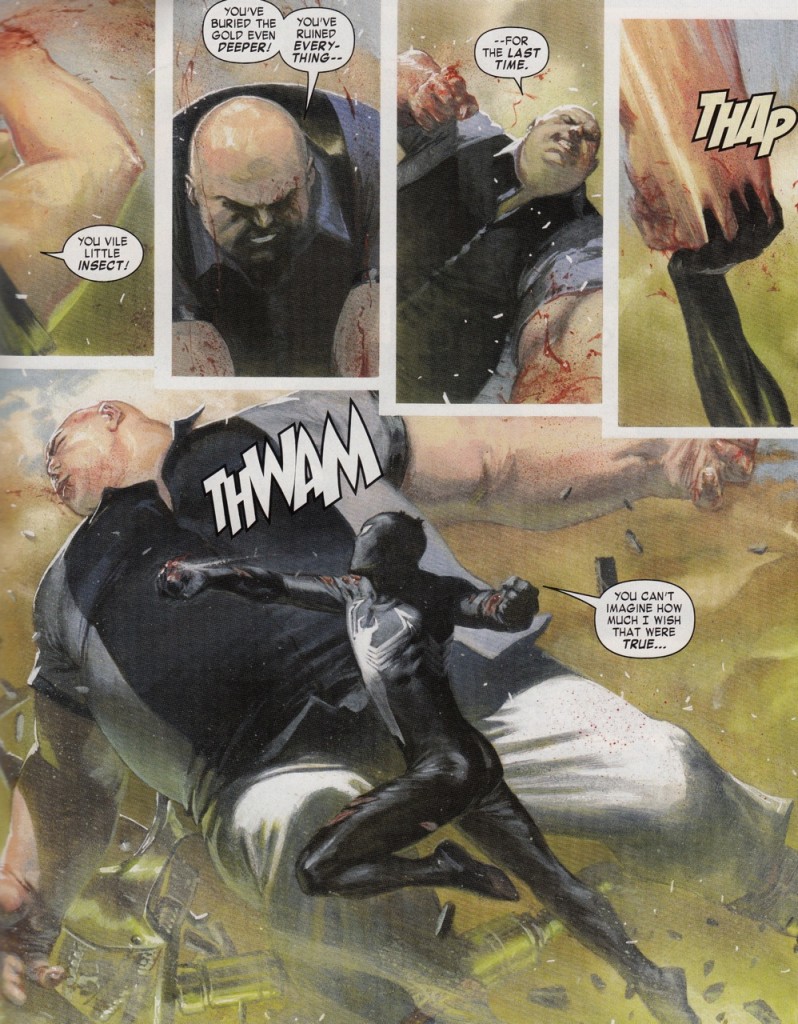


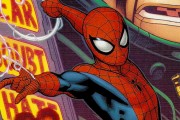
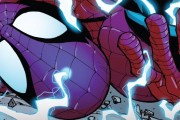
While I’m also not at all a fan of Peter’s parents being spies, (And really, is anyone?), if that’s still in continuity, you might as well use it for a story like this. It was a nice change of pace, and a reminder that there’s nothing wrong with plucking Pete out of his usual wheelhouse once in a while. The art was gorgeous, and it was nice to see the Kingpin be a threat again, as opposed to an outside observer or overboss who sends the actual threat against the protagonist. A shame we probably won’t see Teresa again.
Speaking of wheelhouses, I’m surprised that Marvel has stayed in theirs with this OGN line, thus far. Warren Ellis and Mark Waid are great writers who have done great work, but I’d have thought Marvel would try to get some outside talent for an imprint like this. Their track record of putting TV, prose, or film writers on monthly series has had misses as well as hits, but the OGN format seems tailor-made for outside creators to dip their toes in the MU. The output so far has been good, so I can’t complain, other than to say this reeks of missed opportunities.
Well, I guess it boils down to who Marvel is trying to cater to with this OGN’s, hardcore fans or casual ones. I don’t think casual ones are probably dropping $25 on a comic book hero, so they might as well give hardcore comic fans some talent they can get behind.
I don’t think there’s anything keeping Family Business from being canon. You mentioned Kingpin learning Spidey’s secret ID as being an issue, but it seemed like everyone (save Peter) was mind-wiped at the end. Even the fact that Peter learns Kingpin is alive (after faking his death during Superior Spider-Man, which was a nice touch and placed the book solidly post-Superior) is taken care of, because as far as he knows Kingpin died at the end of this story.
The only problem I could see was Mentallo’s status with AIM per Secret Avengers, but if this takes place after he left AIM (if I’m remembering that correctly), there doesn’t seem to be anything preventing him from having wound up where he did at the beginning of FB.
I thought Family Business was really great. I was expecting to have a problem with the “long-lost sibling” angle, but they handled it really well.
Have a good day.
John Cage